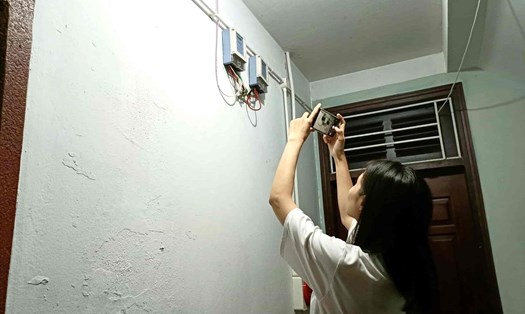At the regular press conference of the Ministry of Industry and Trade on the afternoon of January 7, leaders of units under the Ministry of Industry and Trade answered a number of questions related to the proposal to shorten the time to adjust the average retail electricity price from 3 months to 2 months.
According to the representative of the Electricity Regulatory Authority, the Ministry of Industry and Trade has assigned this unit to develop a decree on the mechanism and time for adjusting the average retail electricity price. This is a new decree, which will be developed and issued at the same time as the effective date of the Electricity Law, which means it must be issued and take effect from February 1, 2025.
"The proposal to reduce the time to adjust electricity prices to 2 months is just an idea" - a representative of the Electricity Regulatory Authority informed.
Currently, this draft decree is continuing to collect opinions from relevant parties, especially those affected by the impact, and it is also necessary to have time to assess the impact when adjusting the cycle. After synthesizing opinions, the Electricity Regulatory Authority will report to the Ministry's leaders to advise on the most appropriate mechanism.
Previously, the Ministry of Industry and Trade organized a consultation on the Draft Decree regulating the mechanism, adjustment time, basis for establishing and adjusting average retail electricity prices.
The drafting agency proposed to shorten the time for adjusting the average retail electricity price to 2 months from the last change. This means that there can be a maximum of 6 price changes per year instead of 4 as at present.
Deputy Minister Nguyen Sinh Nhat Tan added that the proposal to change the average retail electricity price adjustment cycle is a market-based story, so there will be many contents that need further research.
The leaders of the Ministry of Industry and Trade requested the Electricity Regulatory Authority to study and clearly evaluate the impact of adjusting retail prices every 2 months and every 3 months to compare and find the most reasonable direction.
Roadmap for building 2-component electricity price
In addition, at the press conference, the representative of the Electricity Regulatory Authority also informed about the process of building a two-component electricity price.
Accordingly, the Minister of Industry and Trade assigned this Department to study and propose a two-component electricity price mechanism.
The Electricity Regulatory Authority and the Ministry of Industry and Trade then assigned Vietnam Electricity Group (EVN) to directly carry out this work.
According to the Electricity Regulatory Authority, this is a new policy in Vietnam, affecting all electricity users, including small customers. Therefore, despite receiving a number of reports, the Authority still requires EVN to continue collecting data and assessing the impact before making specific proposals to the Ministry of Industry and Trade as well as competent authorities for consideration and application according to the roadmap.
"There must be a roadmap and it cannot be applied uniformly to all customers," said a representative of the Electricity Regulatory Authority.
Currently, Vietnam is still applying a single-component electricity price, which means payment is based on the output used. Meanwhile, the electricity supply process consists of two components: registered capacity and consumed electricity.
This calculation method does not accurately reflect the costs incurred by the electricity industry (depreciation of assets, power lines, transformer stations, etc.) for each customer, does not contribute to improving the equipment utilization ratio, and creates risks for the electricity industry when recovering fixed costs through electricity prices.
With a two-component price, customers will pay separately for each kW of capacity registered monthly with the supplier. When not in use, customers still have to pay this cost instead of the electricity industry bearing and recovering it through price adjustment.











